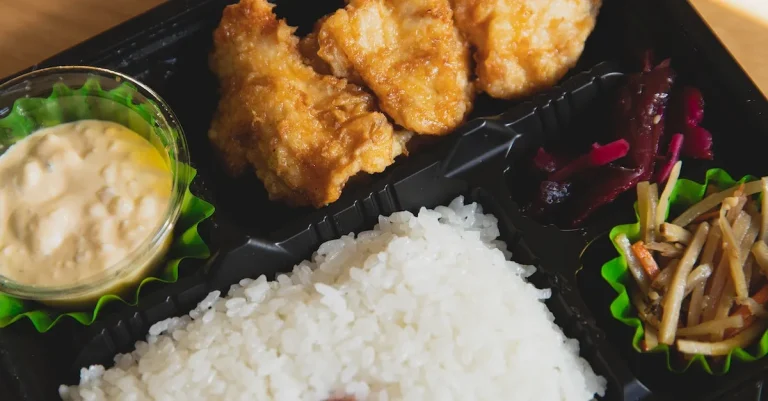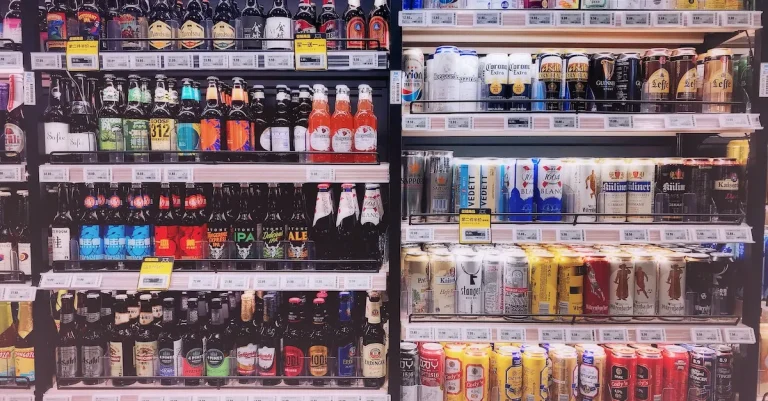Can You Buy Cooked Food With Ebt? Rules For Hot Foods, Restaurants And More
If you receive SNAP food stamp benefits, you may wonder if you can use your EBT card to purchase prepared, cooked foods like rotisserie chicken or pizza. With busy schedules, being able to grab hot takeout meals could provide needed convenience.
If you’re short on time, here’s a quick answer to your question: In most cases, you cannot buy hot, cooked foods or restaurant meals with EBT. However, there are some exceptions that allow certain prepared foods to be purchased in participating stores.
In this detailed guide, we’ll cover everything you need to know about buying cooked and hot foods with EBT. You’ll learn the general federal rules, which specific items are allowed or restricted, and how to make the most of your SNAP benefit while sticking to a budget.
EBT Card Guidelines: What Can You Purchase with SNAP?
When it comes to using your EBT card, also known as the Supplemental Nutrition Assistance Program (SNAP) benefits card, there are specific guidelines and restrictions on what you can purchase. These guidelines are in place to ensure that SNAP benefits are used for essential food items that promote a healthy and balanced diet.
Let’s take a closer look at what you can and cannot purchase with your EBT card.
Eligible Foods
Under SNAP, you can use your EBT card to purchase a wide variety of food items.
This includes:
- Fruits and vegetables
- Meat, poultry, and fish
- Dairy products
- Bread and grains
- Canned and frozen foods
- Snack foods
- Non-alcoholic beverages
These eligible food items can be purchased at grocery stores, supermarkets, and farmers’ markets that accept EBT. It’s important to note that some specific items, such as energy drinks and certain snack foods like candy and soda, may have restrictions depending on your state’s guidelines.
Make sure to check with your local SNAP office or refer to the official USDA website for more information.
Non-Food and Restricted Items
While SNAP benefits are primarily intended for purchasing food, there are certain non-food items that you can also purchase with your EBT card.
These include:
- Seeds and plants for growing food at home
- Prepared foods not intended to be consumed on premises, provided that they are not hot at the time of purchase.
Yes, you read that correctly – you can buy prepared foods with your EBT card, provided they are not hot foods.
In states that participate in the Restaurant Meals Program (RMP), the homeless, disabled, and elderly can buy hot foods and even dine in restaurants. This is especially helpful for these individuals who may not have access to cooking facilities.
It’s worth mentioning that there are certain items that are not eligible for purchase with SNAP benefits. These include:
- Alcoholic beverages
- Tobacco products
- Vitamins and supplements
- Medicine and over-the-counter drugs
- Cleaning supplies
- Personal care items
Keep in mind that these restrictions may vary by state, so it’s always best to consult the official SNAP guidelines or your local SNAP office for the most accurate and up-to-date information.
Why Cooked Foods Are Restricted for EBT Purchases
The restriction on using EBT (Electronic Benefit Transfer) cards to purchase cooked foods is an important aspect of the SNAP (Supplemental Nutrition Assistance Program) program.
This restriction is in place for several reasons, primarily to ensure that the program’s funds are used to provide individuals and families with nutritious and affordable options for preparing meals at home.
The Intent of the SNAP Program
The SNAP program aims to help low-income individuals and families access the food they need to maintain a healthy diet. By providing eligible individuals with funds on an EBT card, SNAP enables them to buy a variety of uncooked food items, such as fruits, vegetables, grains, dairy products, and protein sources.
The program encourages participants to make healthy choices and prepare their meals at home, promoting self-sufficiency and better nutrition.
Allowing the purchase of cooked foods with EBT cards could potentially undermine the program’s goals. It could lead to an overreliance on fast food and prepared meals, which are often high in sodium, unhealthy fats, and added sugars.
These types of foods are generally more expensive than homemade meals and may not provide the same nutritional value.
How States Can Customize SNAP Rules
While the federal government sets the basic guidelines for the SNAP program, states have some flexibility in customizing certain rules. This flexibility allows states to address specific needs and circumstances within their populations.
However, when it comes to purchasing cooked foods with EBT cards, the restriction remains consistent across all states.
States have the ability to create waivers that allow certain exceptions to the cooked food restriction. For example, in the aftermath of a natural disaster, a state may temporarily allow the use of EBT cards to purchase hot meals from authorized retailers.
This flexibility ensures that individuals and families affected by emergencies have access to immediate food assistance.
It’s important to note that the restrictions on cooked foods are in place to protect the integrity of the SNAP program and ensure that funds are used appropriately. By encouraging the purchase of uncooked foods and promoting home cooking, SNAP aims to support long-term health and self-sufficiency for program participants.
Exceptions: What Hot Foods Can You Buy with EBT?
While the Supplemental Nutrition Assistance Program (SNAP) typically does not allow the purchase of prepared foods with Electronic Benefit Transfer (EBT) cards, there are some exceptions to this rule.
These exceptions are aimed at providing assistance to individuals and families who may not have access to cooking facilities or may be experiencing an emergency situation.
Specifically Allowed Under the RMP
Under the SNAP guidelines, certain hot food items are considered eligible for purchase with EBT in states that participate in the Restaurant Meals Program (RMP). This program aims to provide vulnerable populations with access to hot, nutritious meals.
The Restaurant Meals Program (RMP) in California enables eligible homeless, elderly, and disabled individuals to use their EBT cards at participating restaurants to purchase hot foods and prepared meals.
These include ready-to-eat meals from authorized retailers such as grocery stores, convenience stores, and food trucks. Examples of eligible hot foods include rotisserie chicken, deli sandwiches, and pre-packaged meals.
Retailers That Accept EBT for Eligible Hot Foods
The USDA has provided a comprehensive list of authorized retailers that accept EBT for eligible hot foods in RMP-participating states. This list includes major supermarket chains, convenience stores, fast-food chains, local restaurants, and even some farmers’ markets.
It is important to check with your local SNAP office or visit their website to find out which retailers in your area accept EBT for hot food purchases. This will ensure that you are aware of the options available to you and can make informed decisions about where to use your benefits.
Remember, the primary goal of SNAP is to provide individuals and families with the means to purchase nutritious, unprepared food items. While the exceptions for hot food purchases exist, it is still recommended to focus on using your benefits for fresh produce, dairy, grains, and other essential food items that can support a healthy diet.
Stretching Your SNAP Budget with Healthy Groceries
When you’re on a tight budget, it can be challenging to afford healthy groceries. However, with a little planning and strategy, you can stretch your SNAP budget and make nutritious meals a reality.
Here are some tips to help you make the most of your benefits:
Plan Out Meals and Make Grocery Lists
One of the best ways to stay on budget is by planning your meals in advance. Take some time each week to sit down and create a meal plan for the upcoming days. This will help you determine what ingredients you need to buy and prevent impulse purchases.
When making your grocery list, be sure to prioritize items that are versatile and can be used in multiple recipes. This way, you can make the most of your ingredients and avoid waste.
Look for Sales, Deals, and Store Programs
Another way to stretch your SNAP budget is by taking advantage of sales, deals, and store programs. Keep an eye out for weekly flyers and coupons to find discounted items. Many grocery stores also have loyalty programs or rewards cards that can help you save money on your purchases.
Additionally, some stores offer double coupon days or special discounts for SNAP recipients. Take the time to research stores in your area and see if they have any programs that can help you save.
Focus on Nutritious Staple Ingredients
When shopping on a limited budget, it’s important to focus on nutrient-dense staple ingredients. These are foods that provide a lot of nutritional value for their cost. Examples include whole grains like rice and oats, beans and legumes, frozen fruits and vegetables, eggs, and canned fish.
These ingredients can be used in a variety of dishes and provide essential vitamins, minerals, and fiber. By incorporating these staples into your meals, you can create well-balanced and budget-friendly dishes.
Remember, it’s not just about buying the cheapest options but also about making the most nutritious choices.
By planning your meals, searching for deals, and prioritizing nutrient-dense ingredients, you can stretch your SNAP budget and make healthy eating a reality.
Tips for Purchasing Prepared Foods with EBT
Always Check State and Store Rules First
Before using your EBT card to purchase prepared foods, it is important to familiarize yourself with the rules and regulations set by your state and the specific store you plan to visit. Each state has different guidelines regarding the types of prepared foods that can be purchased with EBT.
Some states allow the purchase of hot foods, while others only allow the purchase of cold or uncooked items.
To find out the specific rules in your state, you can visit the official website of your state’s EBT program or contact your local Department of Social Services.
Additionally, many stores that accept EBT have signage posted at their entrances or near the checkout counters, indicating which types of prepared foods are eligible for purchase.
It’s always a good idea to double-check the rules before making any purchases to avoid any potential issues or misunderstandings.
Combine Eligible Hot Foods with Home-Cooked Meals
If your state allows the purchase of hot prepared foods with EBT, you can take advantage of this option by combining them with home-cooked meals.
This can be a great way to save time and effort in the kitchen while still ensuring you have nutritious and delicious food on the table.
For example, you can purchase a rotisserie chicken, which is often eligible for purchase with EBT, and use it as the main protein in a homemade salad or sandwich.
Similarly, you can buy a hot side dish such as mashed potatoes or macaroni and cheese and pair it with a homemade vegetable stir-fry or salad.
By combining store-bought prepared foods with homemade dishes, you can create well-rounded meals that meet your dietary needs and preferences.
Talk to Your Caseworker About Dietary Restrictions
If you have specific dietary restrictions or medical conditions that require you to follow a certain diet, it is important to communicate this with your caseworker. They can provide you with information on any special allowances or exemptions that may be available to you when it comes to purchasing prepared foods with EBT.
For example, individuals with diabetes may be eligible for additional benefits that allow them to purchase certain diabetic-friendly prepared meals or snacks.
Similarly, individuals with allergies or intolerances may be able to purchase specialty items that accommodate their dietary needs.
By discussing your dietary restrictions with your caseworker, you can ensure that you are making the most of your EBT benefits and accessing the foods that best support your health and well-being.
Conclusion
While EBT does restrict purchasing most hot, ready-to-eat foods, knowing which items are allowed can provide convenience for SNAP recipients. However, focusing your benefits mainly on groceries you can cook at home will help you eat affordably and healthfully.
With a mix of home-cooked meals and occasional eligible prepared foods, you can maximize nutrition within your SNAP budget. Just be sure to always verify EBT rules for any hot or cooked items before purchasing.











